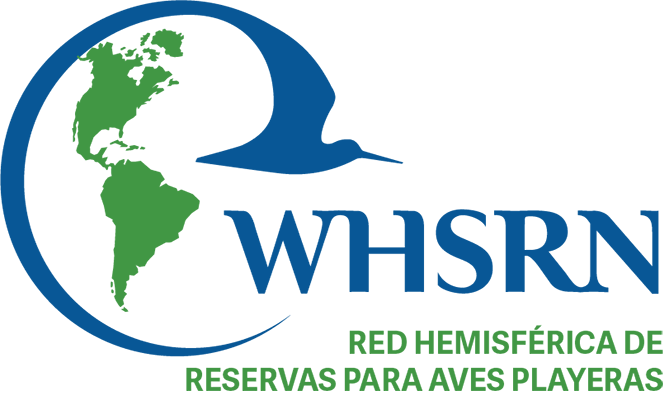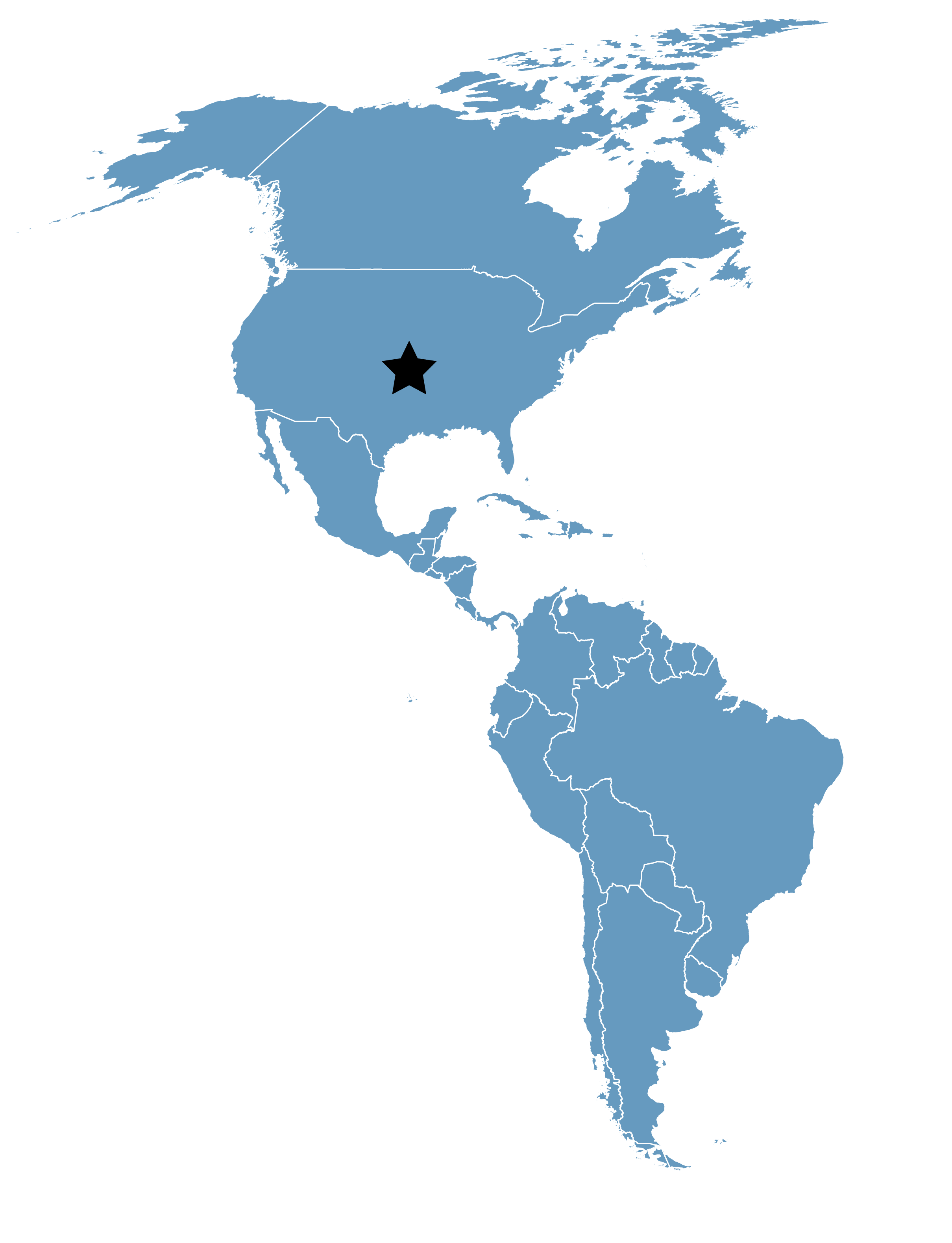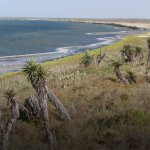Cheyenne Bottoms
Location
Kansas, United States
Category
Hemispheric
Basis for Designation
According to ISS surveys, totals (sum of maximum counts) were as high as 619,047 and 273,308 for spring and fall respectively
Size
11,551 hectares (28,543 acres)
Date Designated
1988
Site Owner
The State of Kansas owns the Cheyenne Bottoms Wildlife Management Area and The Nature Conservancy owns the Cheyenne Bottoms Preserve
Site Partners
Kansas Department of Wildlife, Parks & Tourism
The Nature Conservancy
Ducks Unlimited
Fort Hays State University
Overview
Cheyenne Bottoms is a 41,000 acre natural land sink located in central Kansas. This is within the mixed grass portion of the Great Plains. Approximately 15,500 acres are classified as wetland acres with the remaining 25,500 acres being upland areas.
Approximately 20,000 acres are owned by the people of Kansas and managed by the Kansas Department of Wildlife and Parks. An additional 8,616 acres of the basin is owned and managed by The Nature Conservancy. The State owned portion of the basin has been highly developed to improve management and supplementation of water levels. Initial acquisition, development and management are funded by the hunting public. Principle management goals of The Nature Conservancy are to restore natural hydrology to the area and provide short grass areas favorable for foraging shorebirds. Both properties endeavor to maintain the hemi-marsh condition of the wetland acres using burning, mechanical and chemical techniques and grazing. Likewise, woody encroachment into the adjacent grasslands is controlled using fire and/or mechanical and chemical treatments.
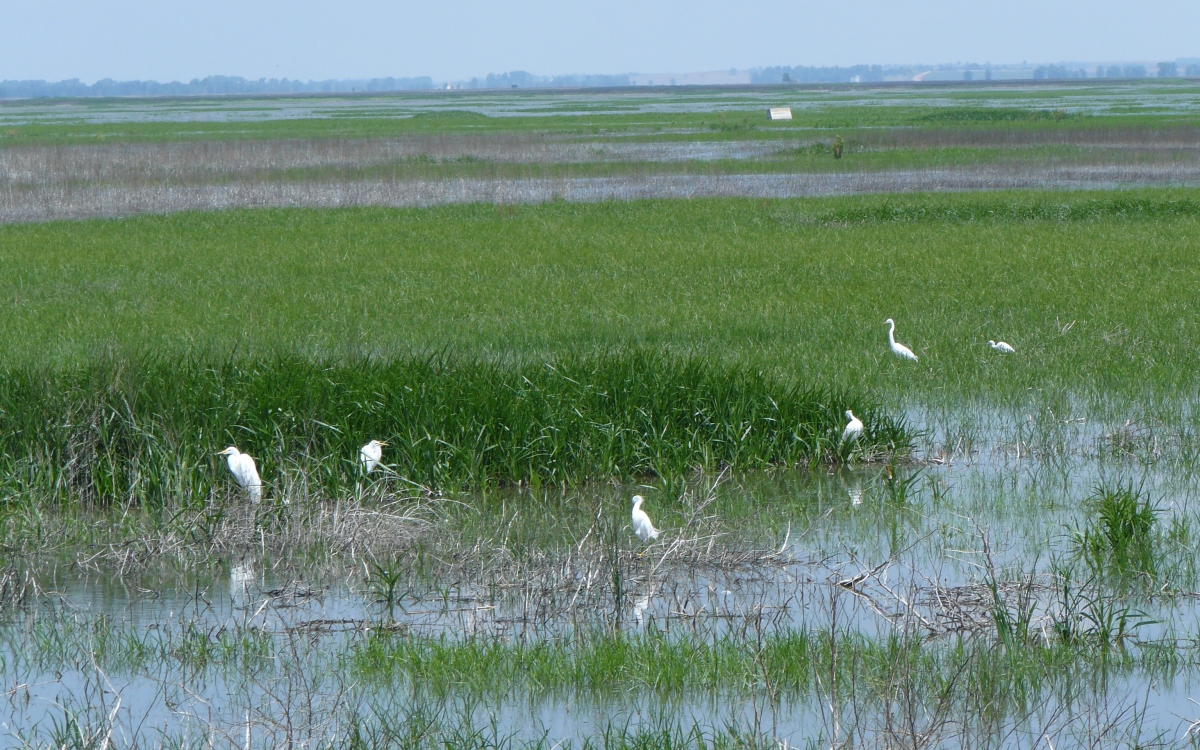
Egrets at Cheyenne Bottoms. Photo: Robert Penner
Heart of the Central Flyway
For some species of migratory birds, the Central Flyway reduces in width to a very narrow path, much like an hourglass. This narrow portion of the Flyway is over Cheyenne Bottoms in the central United States. When habitat conditions are good, millions of migrating birds pass through the Bottoms annually. Hawks, songbirds, ducks, geese and shorebirds all can be seen as they move to or from their nesting areas to the north.
When habitat conditions are good, millions of migrating birds pass through the Bottoms annually.
Mid-Continent stopover
Cheyenne Bottoms has long been recognized as a critical stopping/resting point for migrating shorebirds. Thirty-nine species of shorebirds have been identified at the Bottoms. Most are stopping to rest and re-build body fat for the next leg of their journey. Some will remain to nest, such as the Killdeer, American Avocet, Snowy Plovers, Upland and Spotted Sandpipers, and Wilson’s Phalarope. There are ten species of shorebirds in which a significant percentage of their population may stage at Cheyenne Bottoms.
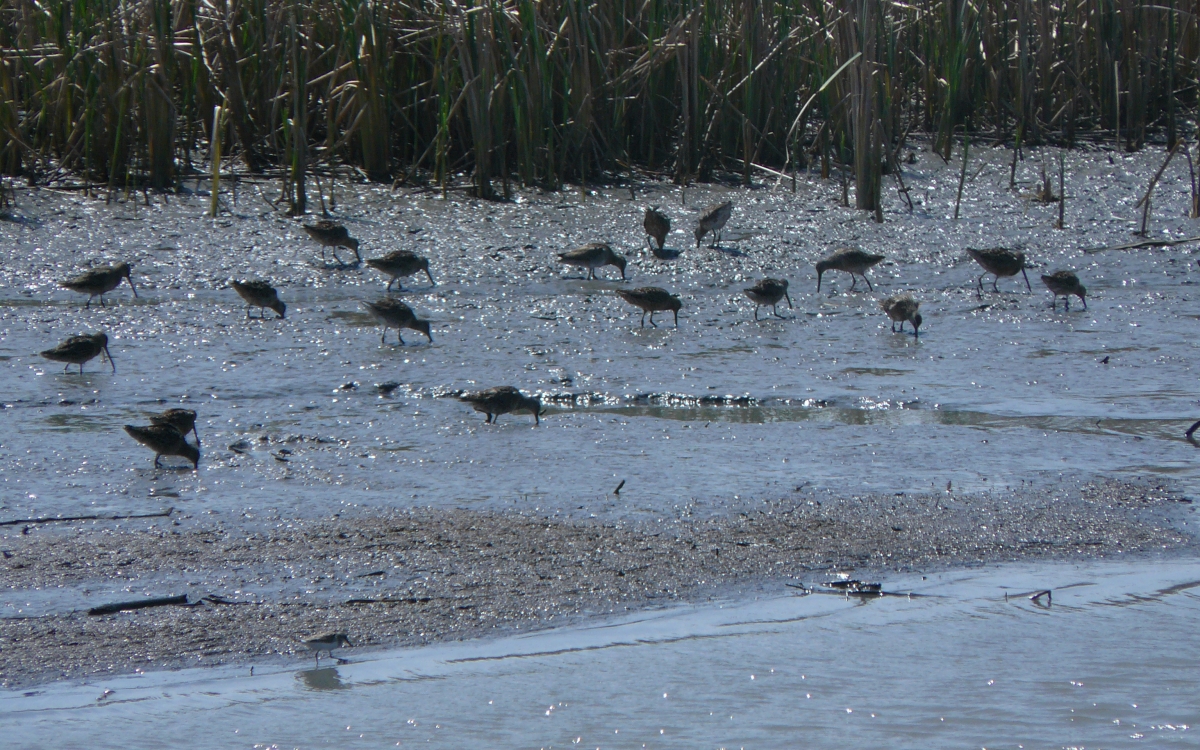
Dowtichers at Cheyenne Bottoms. Photo: Robert Penner
Threats
Exotic and invasive species pose threats to the maintenance of the native habitats of Cheyenne Bottoms. Musk thistle, salt cedar, Eastern red cedar, cottonwood, honey locust and Russian olive are the plants that require intensive management to control. Trees, both native and non-native, can quickly encroach into the grasslands adjacent to the marshes without constant control efforts. Cattail and phragmites expansion in the wetland areas is a continuous threat to the hemi-marsh management goals. Perhaps the greatest threat to the area is climate change. Which will result in warming winters and changes in the timing and size of rainfall events, which most likely will have a negative effect on shorebird habitat availability during migration. In the coming decades, summers are likely to become increasingly hot and dry, creating compounding problems for wildlife and human health.
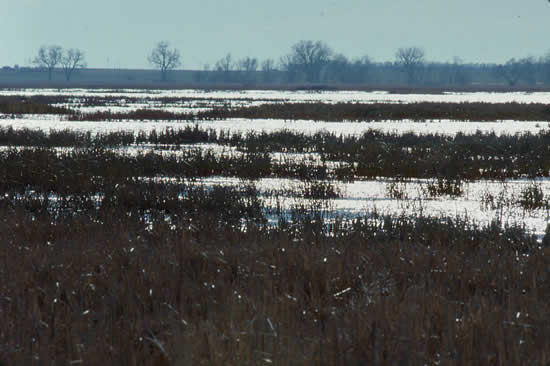
Cheyenne Bottoms. Photo: Karl Grover
The state owned wildlife area has an extensive inlet system to divert surface water from two nearby streams. This water was intended to supplement natural flows into the basin in an effort to provide annual waterfowl hunting opportunity. During the 1970’s and 1980’s, the state over-appropriated ground water withdrawals and as a result, base flows in the streams has been all but eliminated. With no base flows, supplemental water for the wildlife area is available primarily only after significant rain events, when silt laden water finds its way into the streams. Diverting this water into the basin through the inlet system has accelerated the siltation rate of the basin and leads to increasingly favorable conditions for the spread of emergent vegetation such as cattail.
Both properties are being required to do more with less as budgets get stretched more and more. Increased fuel costs, diverting resources from wildlife conservation efforts to human demands are two examples of how management efforts are being diluted.
Management Priorities
Both the Kansas Wildlife and Parks and The Nature Conservancy direct management efforts to controlling tree encroachment into the grasslands and the spread of emergent vegetation in the wetland acres of their respective properties.
Water level management on both properties is directed at maximizing wetland habitat diversity. This allows for a wide variety of water bird species to make use of the Cheyenne Bottoms basin. Efforts are made to provide mudflats and shallow water areas for shorebird foraging, especially in the spring. Wildlife and Parks also manages for moist soil plant establishment to enhance waterfowl food production for the fall migration.


